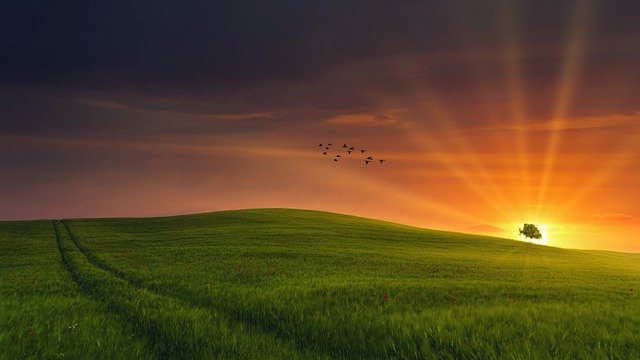 While we all begin to acclimate to the “new normal”, we look forward to the Summer months with hopes of returning to business as usual. Information regarding the summer solstice is rich in historical and scientific data. Here are ten fun facts about the summer solstice.
While we all begin to acclimate to the “new normal”, we look forward to the Summer months with hopes of returning to business as usual. Information regarding the summer solstice is rich in historical and scientific data. Here are ten fun facts about the summer solstice.
1. “Solstice means “sun-stopping” in Latin describing the way the sun looks on this day. Historically, the solstice was an important date that helped farmers know when to plant, grow and harvest crops.”
2. “The summer solstice always occurs between June 20 and June 22, but because the calendar doesn't exactly reflect the Earth's rotation, the precise time shifts slightly each year. For 2020, the Sun will reach its greatest height in the sky for the Northern Hemisphere on June 20 at 5:44 p.m. EST.”
3. “All the planets in our solar system have summer solstices. Mars's solstice occurs a few days after Earth's in June. On Uranus, the summer solstice happens once every 84 years. The next one will occur on October 9, 2069. Each season lasts for 21 years. Talk about a never-ending winter!”
4. “At the other extreme, Venus’s and Jupiter’s poles are almost exactly perpendicular to their orbits. Because of that, their solstices—hence their seasons—are barely noticeable.”
5. “The solstice Sun stands directly over the Tropic of Cancer. In fact, that’s how the Tropic of Cancer got its name. It’s the northernmost line connecting all places on Earth where the Sun is ever straight up. That’s because a few thousand years ago, the solstice happened when the Sun was in the constellation of Cancer the Crab.”
6. “Astronomers and scientists use the date of the June solstice to mark the beginning of summer in the Northern Hemisphere and winter in the Southern Hemisphere. For meteorologists, on the other hand, summer began almost three weeks ago, on June 1.”
7. “In Christianity, the summer solstice marks the festival of St. John the Baptist. In the Pagan community, summer solstice is cause to celebrate with feasts and bonfires. They refer to summer solstice as the holiday 'Midsummer'.”
8. “Midsummer was thought to be a time of magic, when evil spirits were said to appear. To thwart them, Pagans often wore protective garlands of herbs and flowers. One of the most powerful of them was a plant called 'chase-devil', known today as St. John's Wort used by modern herbalists as a mood stabilizer.”
9. “While the longest day on the equator is typically about 12 hours, the Northern hemisphere can experience days that are far longer. For example, the North Pole can experience as much as 24 hours of sunlight. Areas such as Pennsylvania and northern California experience over 15 hours of daylight while Maine and Washington experience about 16 hours.”
10. “Even though the June solstice is the longest day of the year in the Northern Hemisphere, most places do not see the earliest sunrise of the year on this day. The earliest sunrise happens a few days before, and the latest sunset takes place a few days after, the June solstice.”





